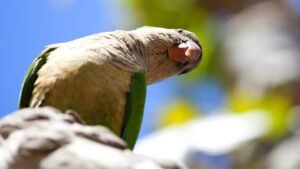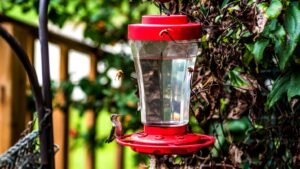African Greys are unique birds from the family of holo-tropical parrots, which is one of the last three families of real parrots. These birds carry out many tasks, from serving as great household pets to perfectly copying human speech.
In this article, we will elaborate on the core characteristics of these African Grey Parrots and all you need to know.
What Species of Bird is the African Grey Parrot?
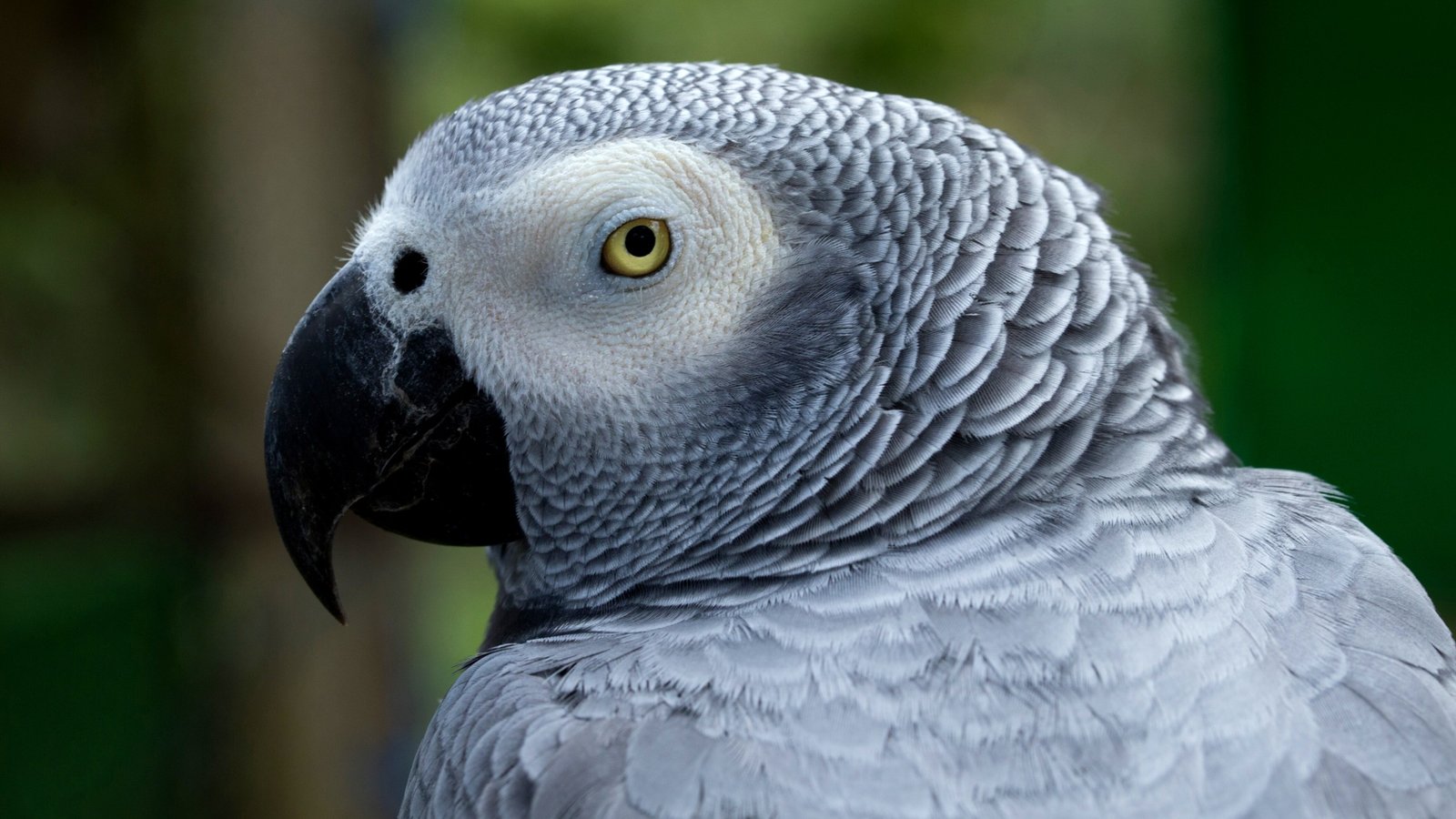
The African Grey, as the name entails, is widely known for their grey feathers. There are two existing subspecies of this bird: the Timneh and Congo Greys. Both species feature similar physical characteristics. However, Congo Greys are slightly larger and shinier than Timneh Greys, with lighter and smoother colors.
Male And Female African Gray Parrot Distinctions
All African Greys are identical during the early stages of growth. But, once these parrots reach adolescent ages of at least 12 months, certain features distinguish the females from the males.
Both male and female African greys develop solid red tails during maturity. However, the female Greys form silver linings at the tip of their red tails. In addition, the wings of a female African grey remain light through growth, while the male birds develop dark wings from underneath as they grow.
There are also additional factors like the neck length and head size, which can help you quickly detect the gender of an African grey. For example, male greys usually have narrow heads and shorter necks. In contrast, females often have long and round necks with less thin heads.
It is sometimes difficult to differentiate between a male and female Greys parrot. In this case, you can always consult the services of an animal doctor for some DNA tests.
Behavior
African greys are highly social birds in nature. These birds prefer a group-style living structure, even when trained in captivity. Isolating an African grey leads to stress, which shortens the bird’s life expectancy.
One common symptom of a distressed African grey is feather plucking. Most parrots of the same species have identical living patterns. However, there are slight differences in behavioral features, depending on the environment.
Behavioral Characteristics Of African Greys in The Wild
Wild African greys naturally prefer lowland tropical rainforests. However, they often venture in groups into surrounding landscapes in search of food.
Parrots live secretive lives in the wild, as they are prey birds. As a result, little information is available on the exact living pattern of Grey parrots in the wild. However, some research projects reveal that wild African parrots mimic the sounds of other animals and birds in the forest, just as they do while pets.
African Greys As Pets
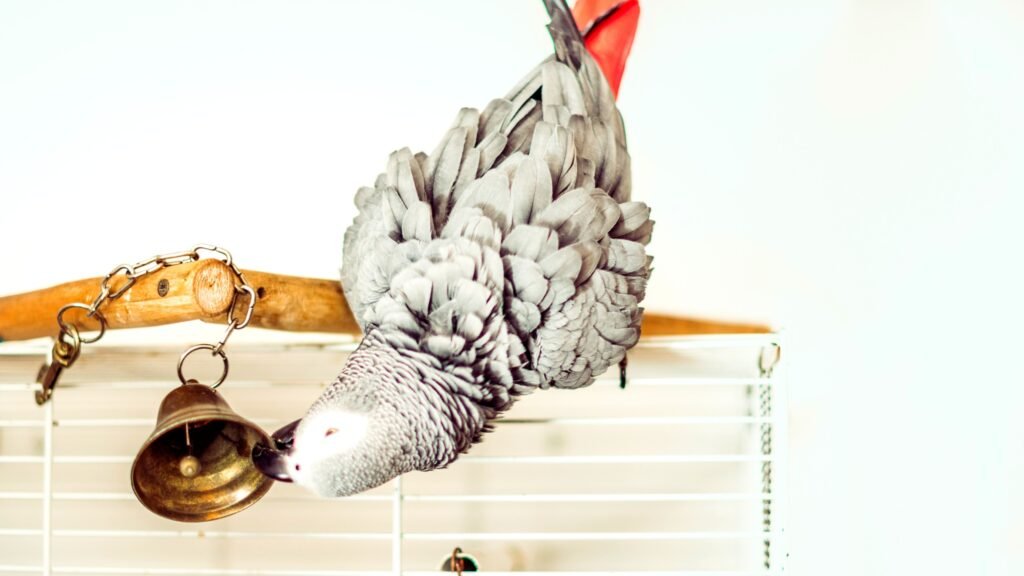
Grey parrots are intelligent birds, so they function great as household pets. These birds typically copy all the sounds from humans and other audible objects around them and repeat these sequences tirelessly. Greys are easy to keep as pets, but there is a need to pay close attention, as parrots are easily distressed while in captivity.
African Greys bond perfectly with families; they are not really one-person birds. The training style can affect a Grey parrot’s behavior and determine if it would encourage relationships with people other than its immediate owner.
Habitat
Grey parrots naturally live in equatorial Africa, including countries like Congo, Ghana, Cameroon, Ivory Coast, Uganda, Kenya, and Angola. The original population of Grey parrots is not known. However, some sources claim that the global population of African Greys range from 600,000 to 13 million birds.
Research from the IUCN (International Union For Conservation of Nature) reveals that African Greys are experiencing massive depopulation. Most locals blame this on deforestation. However, these birds are more threatened by the global pet industry. A whopping 21% of the African Greys’ total population goes into the pet industry yearly.

To reduce these numbers, sellers now have to register with the ‘CITES’ to gain permits for the sales of African Grey parrots.
Diet – What Does The African Grey Parrot Eat?
While in the wild, African greys are frugivores. Their diets consist primarily of nuts, fruits, and seeds. However, some also eat insects. For example, grey parrots love palm fruit and eat tree bark and snails.
In captivity, the best foods for African grey parrots are fruits like melon, over-riped mangoes, and pomegranates. Vegetables like kale, arugula, and sprouts are also very good for African greys and seeds like flaxseed.
It is advisable to offer a half cup of formulated pellets mixed with fruits and vegetables to an African grey daily. Also, these parrots enjoy snacks like biscuits and other treats such as salad and steamed green beans.
The training style of an African grey can affect its choice of food. But parrots generally eat fruits, vegetables, and some extra treats.
Diseases that Affect The African Grey Parrot
African grey parrots are prone to several diseases that can be fatal in some cases. These diseases also affect parrots in the wild, but they are more prevalent in parrots held in captivity.
One of the most common diseases among African greys is the Psittacine Beak and Feather Disease. This disease is more common among young African greys but also affects adult parrots in rare cases.
Infected parrots often lose appetite, have sluggish walking abilities, and generally fluffy feathers.
Here are some other diseases that affect African Grey Parrots:
- Sarcocystis
- Avian Bornavirus (ABV)
- Aspergillosis
- Psittacosis
Average Lifespan of an African Grey Parrot
African grey parrots have a lifespan of 23 years in their natural habitat in the wild. Of course, these birds can live longer, but several factors can affect their lives in the wild. First, parrots are prey so they could be victims of predation at some point, either from hawks, monkeys, vultures, or even humans.
African greys can live for way longer than in the wild as pets. Typically, an African grey lives about 40-60+ years in captivity. However, this greatly depends on the training style you adopt.
How Much Does an African Grey Parrot Cost?
The price of an African grey parrot depends on several factors. These can be age, species, gender, or parrot. Typically, Congo Greys are slightly cheaper than Timneh Greys, as they are easily accessible. Timneh Greys are less common, so it is rare to see them in pet markets often.
As of writing this article, Congo African Greys cost between $500-$2,000. Whereas, Timneh African greys cost between $1,500-$3,500.
FAQs About African Grey Parrots
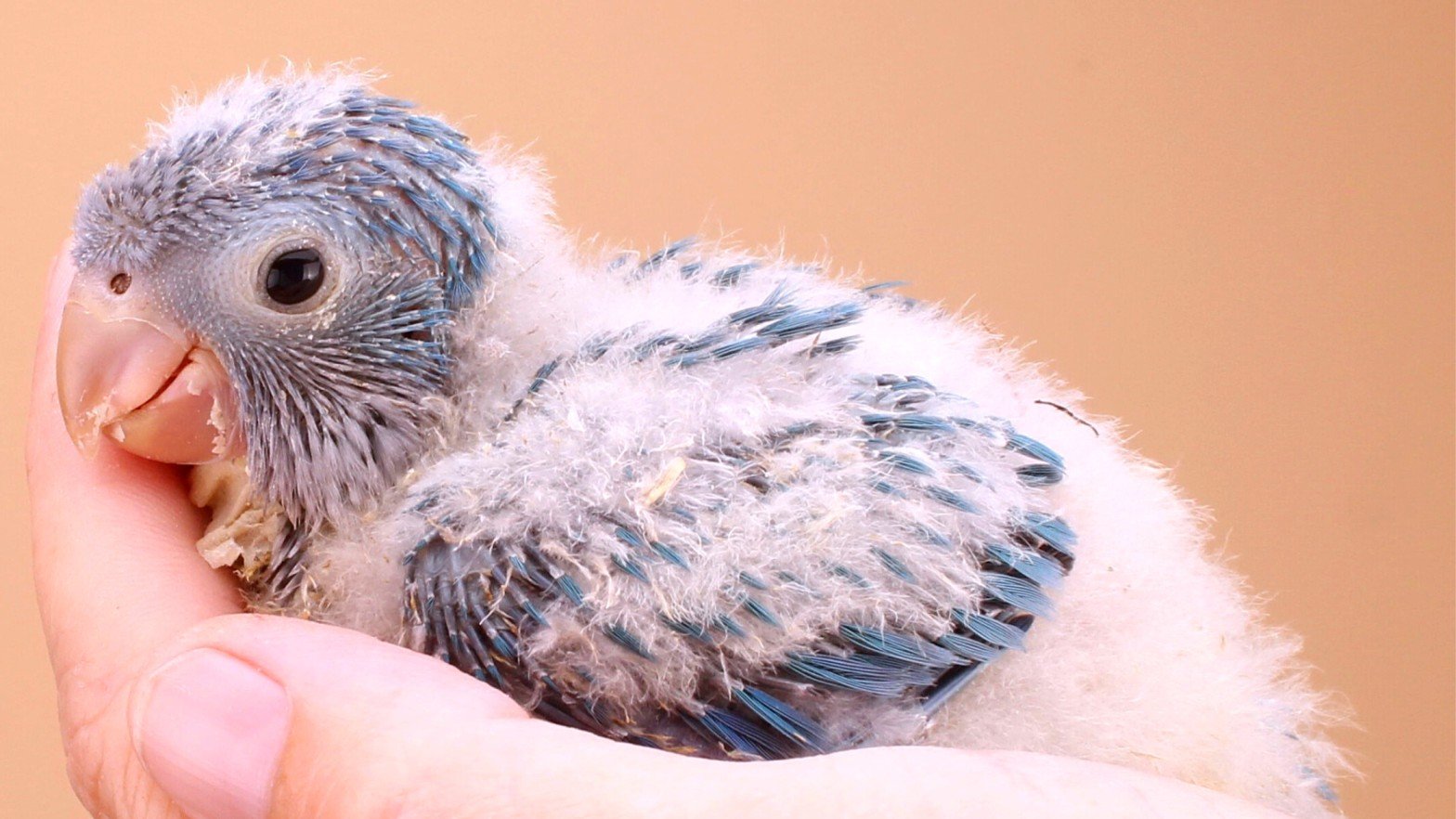
Do African grey parrots bite?
Yes. A scared African grey can bite and exhibit aggressive behavior when triggered. In these scary moments, these parrots can also cause damage to themselves by trying to flee captivity. However, other than the scenarios detailed above, African Greys are hardly aggressive. Also, these birds display an array of body language indicating distress before ever having to bite anyone physically.
Is an African grey parrot a good pet?
The African grey is an intelligent parrot species, serving significantly as a good pet. This bird can quickly build a strong relationship with familiar individuals, which is an important feature for pet animals.
African Greys need extensive care and attention to encourage great relationships. In addition, they need regular exercise like short walks and jumps to prevent minor Health-Related behavioral disorders.
Do African grey parrots talk?
African greys are the best-talking species of parrots. These birds gain their complete talking skills when they are 12 months old. Upon hearing a word or phrase once or twice, African greys can repeat them tirelessly and never forget. Grey parrots can learn up to 1,000+ words. However, each bird’s speaking ability depends on the trainer’s experience level.
Are African greys suitable for beginner trainers?
African grey parrots require a high level of maintenance as pets. They are easy to get along with, but they are not perfect for beginner trainers. Parrots are susceptible to their living environment, so even the slightest mistakes can lead to significant consequences.
You must provide the proper diet for an African grey, sufficient exercise, regular healthcare, and strategic talking lessons. Though you can learn from other owners online and also take courses, you are bound to have flaws as a beginner, so it is best to consult the service of an expert.
Are African grey parrots big?
The African Grey is a medium to large-sized bird that reaches a typical weight of 400-700g and a length of approximately 13+ inches. In addition, its wingspan reaches a vast span of 20+ inches.
What are the best play toys for African grey parrots?
African grey parrots love to play with wood scraps and enjoy destroying and chewing wood. Also, you can purchase chew toys and cardboard and place them in cages where you train African greys. Alternatively, you can use an old wood-woven basket as a more lasting toy for your parrots.
What is the best cage size for an African grey?
African grey parrots naturally need large living spaces, so the bigger the cage, the better. The minimum size for a parrot cage should be 3ft by 3ft and 4ft in height. These huge cages will encourage happy behavior for your parrot, as these birds are quite claustrophobic in nature.


